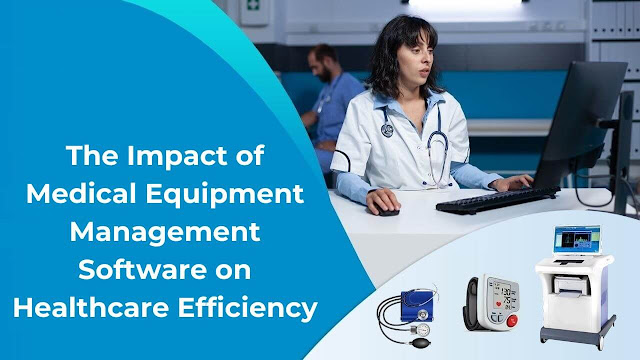The Impact of Medical Equipment Management Software on Healthcare Efficiency
In the dynamic realm of healthcare, the implementation of Medical Equipment Management Software (MEMS) has emerged as a transformative force, revolutionizing operational efficiency and patient care.
Impact of Medical Equipment Management Software on healthcare efficiency
This blog explores the profound impact of Medical Equipment Maintenance Management Software Service CRM on healthcare efficiency and the various ways it enhances overall healthcare delivery.
1. Streamlined Equipment Maintenance:
- Detailing how MEMS automates and streamlines equipment maintenance processes.
- The reduction in downtime and improved reliability of medical devices through proactive monitoring and scheduled maintenance.
2. Predictive Maintenance and Downtime Reduction:
- Examining the role of predictive analytics in MEMS for anticipating equipment failures before they occur.
- The significant reduction in unplanned downtime, leading to enhanced healthcare service continuity.
3. Resource Optimization:
- Discussing how MEMS aids in optimal resource allocation, ensuring healthcare facilities make the most of their equipment and personnel.
- Examples of how efficient equipment management translates to cost savings and improved resource utilization.
4. Enhanced Patient Care:
- Highlighting the direct impact of MEMS on patient care through reliable equipment availability.
- The role of MEMS in ensuring timely diagnostics, treatment, and overall improved healthcare outcomes.
5. Improved Regulatory Compliance:
- Addressing the compliance benefits of MEMS in adhering to healthcare regulations and standards.
- How automated tracking and documentation within MEMS contribute to regulatory compliance.
6. Interconnected Healthcare Ecosystem:
- Illustrating how MEMS fosters integration within the broader healthcare ecosystem.
- The impact on communication, data exchange, and collaboration among different healthcare stakeholders.
7. Data-Driven Decision Making:
- Exploring the role of data analytics in Medical Equipment Maintenance Management Software for providing actionable insights.
- How data-driven decision-making contributes to strategic planning and continuous improvement in healthcare operations.
8. Remote Monitoring and Telehealth Support:
- Discussing how MEMS supports the growing demand for remote monitoring and telehealth services.
- The role of MEMS in ensuring the reliability of equipment used in virtual care settings.
9. User-Friendly Interfaces for Healthcare Professionals:
- The importance of user-friendly interfaces in MEMS for healthcare professionals.
- How intuitive designs contribute to the seamless adoption and utilization of MEMS in daily workflows.
10. Future Outlook and Continuous Improvement:
- Reflecting on the future of MEMS and its potential for ongoing enhancements.
- The continuous evolution of MEMS to meet the ever-changing needs of healthcare institutions.
Conclusion:
As healthcare institutions strive for efficiency and excellence; the impact of Medical Equipment Management Software cannot be overstated. From streamlined maintenance to enhanced patient care and compliance, MEMS stands as a cornerstone in the journey towards a more efficient and patient-centric healthcare landscape. The continuous integration of advanced technologies in Medical Equipment Management Software Service CRM promises a future where healthcare efficiency is not just a goal but a tangible reality.





Comments
Post a Comment